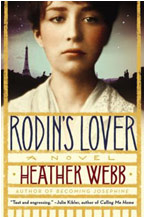 I confess, this is not my writing checklist. Janis Hubschman created it and is kind enough to share it with the world. If you aren’t using these techniques to advance your prose, I suggest you get busy. They may save you a couple of crappy first novels or short stories.
I confess, this is not my writing checklist. Janis Hubschman created it and is kind enough to share it with the world. If you aren’t using these techniques to advance your prose, I suggest you get busy. They may save you a couple of crappy first novels or short stories.
1. WHEN THE STORY STALLS, ask: what is the character thinking now? Is she thinking anything? If not, why not? Characters need to learn something about themselves, about their values and assumptions.
2. CHARACTERS REVEAL THEMSELVES UNDER STRESS. Raise the stakes. Drive the character into a tight spot. What are the psychological crutches the character relies on under pressure?
3. READERS LIKE TO LEARN about something when they read. The details of an unusual job or hobby, the day-to-day activities of a particular place at a particular time in history, for example, draw the reader in.
4. TRUST THE READER. Remember Hemingway’s iceberg theory: “you could omit anything if you knew you omitted it and the omitted part would strengthen the story and make people feel something more than they understood.”
5. TAKE APART SUCCESSFUL PUBLISHED STORIES (or the stories of writers you admire) to see how they work.
6. GIVE THE CHARACTER SOMETHING TO DO in the scene. It brings the character and the scene to life. A character soaking in the bathtub, thinking about her rotten marriage is boring. A character performing brain surgery, thinking about her rotten marriage is a different proposition.
7. TO GAIN INSIGHT INTO A CHARACTER, CONSIDER HER HISTORY: Think about what happened before the story, what tortuous path led the character to this particular moment?
8. ALLOW THE CHARACTER TO MISINTERPRET another character’s words or actions. In life, we often misread a situation, jump to conclusions. Interesting things can happen when characters make presumptions or project their own hang-ups onto others.
9. LET THE CHARACTERS CONNECT WITH OTHERS. Alienated characters, the whiney and self-absorbed protagonists that blame everyone else for their predicament have lots of precedent in literature, but can hold readers at a remove.
10. BUILD TENSION BY SLOWING DOWN A SCENE. Let the scene unfold moment by moment. Linger on the details. Build silences into the dialogue.
Any other pearls of wisdom fellow writers care to share?
6 Comments
Join the conversation and post a comment.
Trackbacks/Pingbacks
- Monday Mentions: Severed Heads, Writing Fines & Star Trek Cats « Amy Shojai's Blog - [...] 10 Rules of Writing–Best Checklist EVER for novelists posted by Heather Webb with kind permission from Janis Hubschman [...]














What a fabulous list! I’m bookmarking this!
Great list. Another helpful tip I’ve found to help keep things fresh during revisions and rewrites: Print out a copy and circle any words (adjectives, and verbs especially) that are used in a typical or cliche context. Such as a snake slithering; that’s what we expect it to do. What we don’t read as often: The snake mounted the sleeping figure of the…blah blah blah. Two great ways to keep the creativity level up is to a) keep a word bank of interesting adj and verbs you encounter in your reading and see how you can use them in sentences later and b) read poetry of the highest quality, where unexpected combinations of words secretly shake hands on a regular basis.
Great advice, Guy. I love your point about poetry, as well. I adore reading poetry, but it’s been awhile since I have read any. Time to pick up a few volumes. Thanks for sharing.
Good list of pointers….I’ve never thought about using pointer number 8. Don’t know why not…it happens to my husband and I all the time!
Isn’t that funny, Carolyn? Many of these pointers seem like common sense, and yet, it’s not always inuitive while entrenched in our characters lives in our heads. 🙂 Thanks for your comment.
Thanks for laying this out clearly in 10 specific actions. Sharing now!